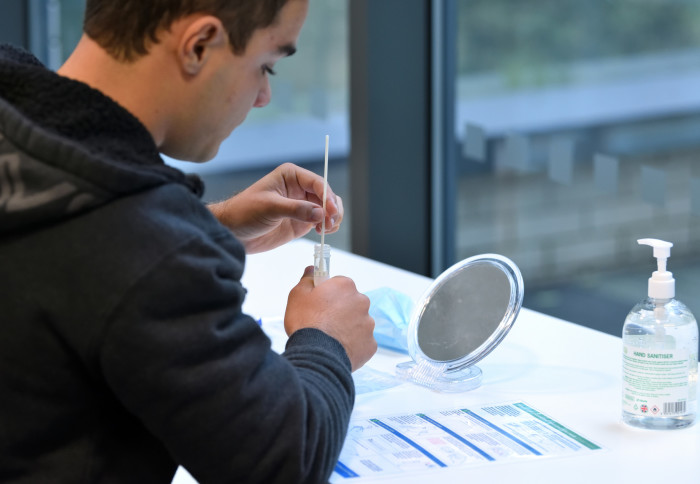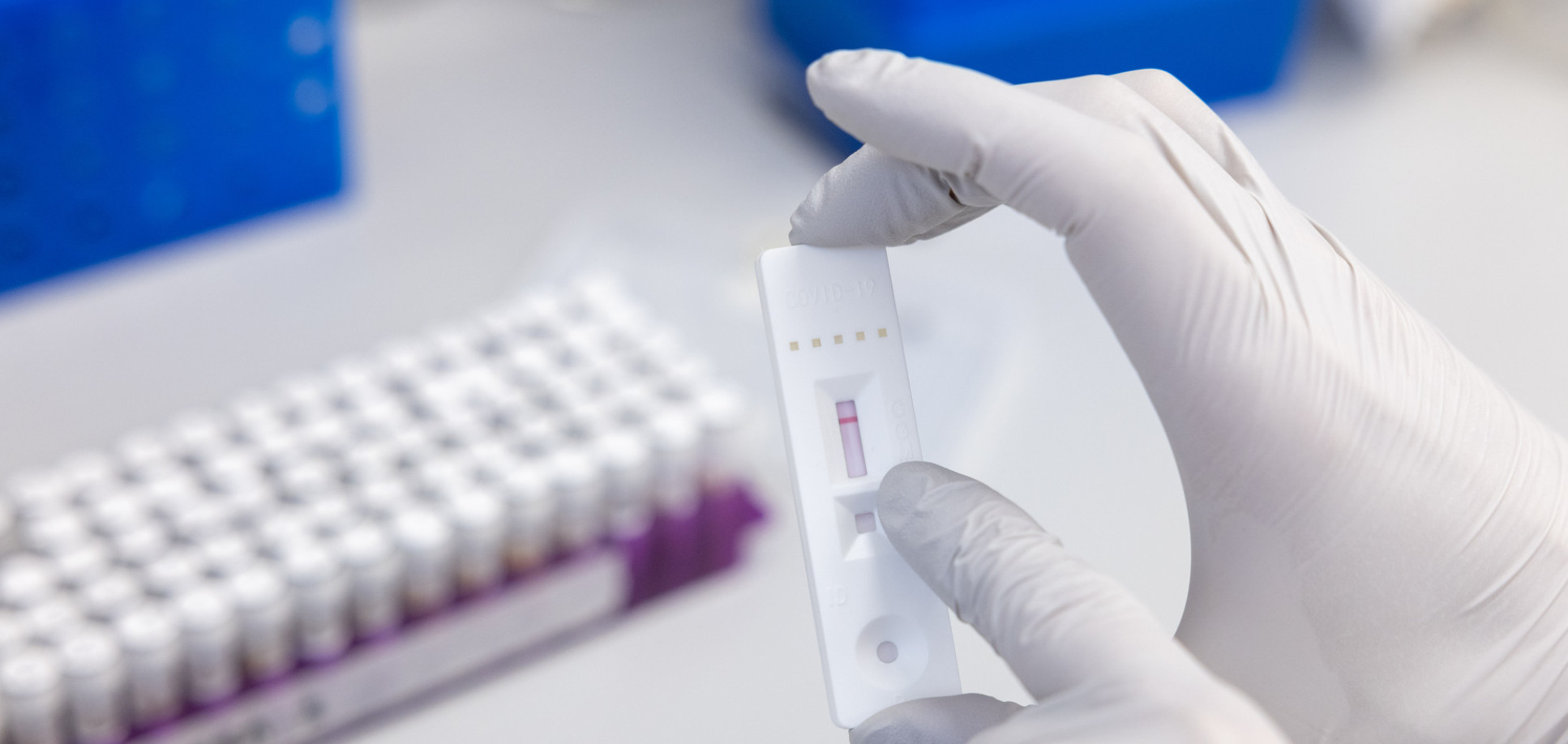COVID-19 – how long am I infectious and when can I safely leave isolation?
by Emily Head

Imperial experts share their advice on self-isolation after testing positive for COVID-19.
[This article was published on 18 August 2022]
New research from Imperial College London scientists provides detailed new insights into how long people with COVID-19 are infectious. The study is the first real-world evidence of this kind.
The study of 57 people is relevant to those with mild COVID-19 disease. It may not apply to very young and old people, or those with medical conditions. This is because children are thought to clear the virus more quickly, while older people and those with medical conditions may be slower at clearing the virus.
"Based on our findings, we recommend that people with COVID-19 isolate for five days after symptoms begin, then use lateral flow tests to safely leave isolation." Dr Seran Hakki National Heart & Lung Institute
In the study, two-thirds of cases were still infectious five days after their symptoms began, and one-quarter were still infectious at seven days. However, at the time of publication, NHS guidance suggests that people should try to stay at home and avoid contact with others for just five days.
While there is no longer a legal requirement to self-isolate if you test positive for COVID-19, many people still want to isolate until they are not infectious.
Emily Head speaks to the authors of The Lancet Respiratory Medicine study, Dr Seran Hakki (SH) and Professor Ajit Lalvani (AL) from Imperial’s National Heart & Lung Institute, to find out more.
Q. What’s new about this study?
A. (AL) Previous studies estimating how long someone is infectious for have been a laboratory-based human challenge study or have used mathematical modelling.
Our real-world study involved detailed daily tests of 57 people exposed to SARS-CoV-2 in their home to look at how much infectious virus they were shedding throughout their infection.
Q. How long am I infectious for if I have COVID-19?
A. (SH) Our study found that the average amount of time that people were infectious was five days.
However, this varied from person to person.
Only one in five participants in our study were infectious before symptom onset (7 out of 35 cases), so most people only became infectious after they developed symptoms.
22 of 34 people continued to shed infectious virus five days after their symptoms began, and eight of these people continued to shed infectious virus at seven days.
This is despite the levels of infectious virus people shed reducing over the course of infection.

Q. How long should I isolate for if I have tested positive or have symptoms?
A. (SH) As per NHS guidance, if you test positive for COVID-19 or have symptoms after being in contact with someone with confirmed COVID-19, you should try to stay at home and minimise contact with other people.
Based on our findings, we recommend that people with COVID-19 isolate for five days after symptoms begin, then use lateral flow tests to safely leave isolation. This supports the current guidance for NHS staff who test positive for COVID-19.
Q. How can I work out when it’s safe to leave isolation?
A. (SH) Our study found that, while lateral flow tests are not reliable for early diagnosis (unless used daily), they are good at spotting when someone is no longer infectious, so testing to release people from isolation may work.
"If a person continues to test positive on day six or beyond, or does not have access to lateral flow tests, we think they should remain in isolation until they’ve had two consecutive days with negative test results." Professor Ajit Lalvani National Heart & Lung Institute
After five days of isolation, people can complete lateral flow tests on days six and seven.
If these tests are negative, we think it is safe to leave isolation on day seven.
If a person continues to test positive on day six or beyond, or does not have access to lateral flow tests, we think they should remain in isolation until they’ve had two consecutive days with negative test results. Or, they can leave isolation on the 10th day after their symptoms began. Based on the evidence available, we think it’s unlikely for people to still be infectious on day 10.
Q. What about if I’m vaccinated?
A. (AL) The people in our study were infected between September 2020-March 2021 and May-October 2021, meaning only 25 of 57 had received two vaccine doses.
Because of this we had limited statistical power to detect differences by vaccination status. In an exploratory analysis, we did find preliminary evidence that infectiousness declined somewhat faster in vaccinated cases, but more research is needed.
For now, we think it’s best to follow the same approach if you’re vaccinated.
Q. What if there’s a new variant?
A. (AL) Future variants may vary so we can’t say that this isolation approach will apply to people infected with these.
Our study looked at people infected with pre-Alpha SARS-CoV-2 virus and the Alpha and Delta variants.
While our study did not assess the Omicron variants currently circulating, we believe that what it says about infectiousness and isolation may be cautious but still applicable. This is because there is some evidence that Omicron variants have a lower viral load and shed for less time than other variants.
-
You can read more about their study here too.
Article text (excluding photos or graphics) © Imperial College London.
Photos and graphics subject to third party copyright used with permission or © Imperial College London.
Reporter
Emily Head
Communications Division